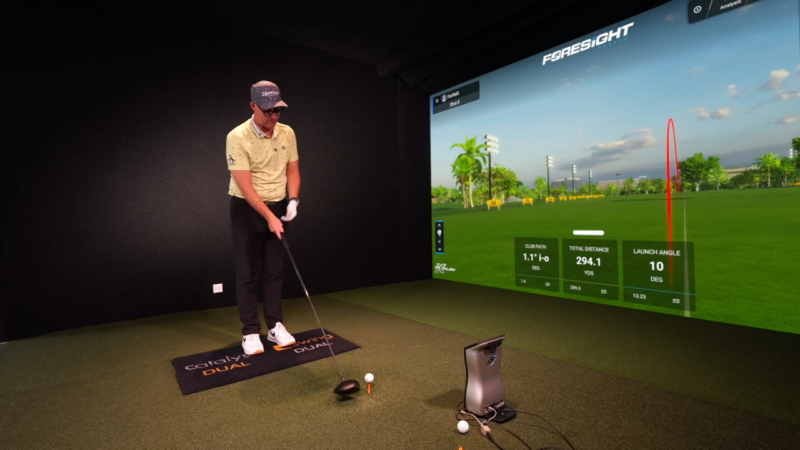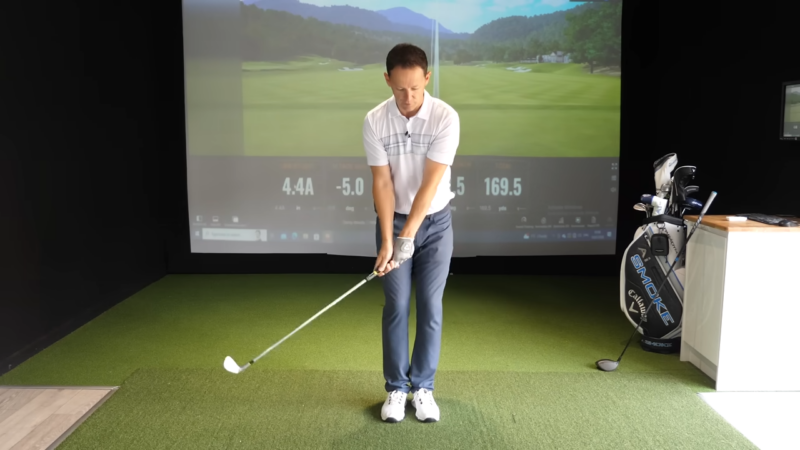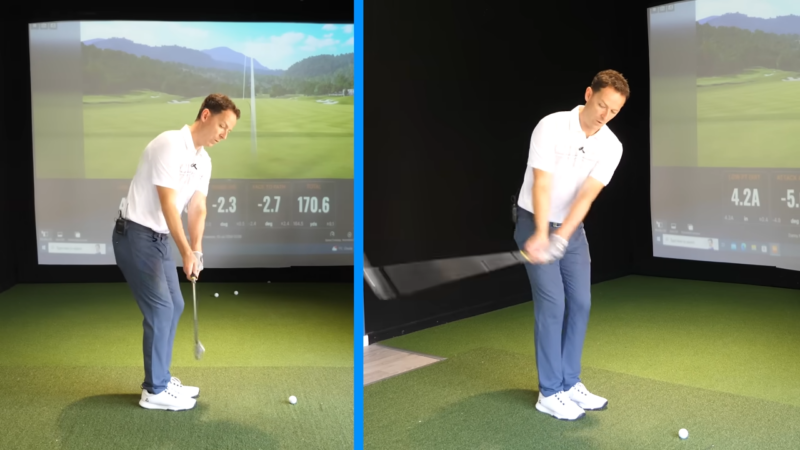Alright, let’s be real for a second—golf can be downright frustrating, right? One day you’re out there feeling like a pro, and the next you’re chasing balls into the woods thinking, What the heck happened to my swing?
I’ve had those rounds where it feels like my body just forgot how to work. But, after some embarrassing air shots and way too many hours at the range, I realized something – it’s all about feeling. Not overthinking every angle or position, but actually knowing what a good swing feels like from start to finish.
Today we’re talking about the whole thing—setup, backswing, downswing, the whole shebang—in a way that makes sense and, hopefully, brings a little fun back to the process. Let’s figure it out together!
The Setup
Before you even think about taking a swing, your setup has to feel right. This is where it all starts.
- Stance: Imagine you’re standing firmly on the ground, like you’re ready for anything. Your feet should be about shoulder-width apart, providing a solid base. You don’t want to feel wobbly, but also not stiff like a statue. Balanced and athletic is the vibe here.
- Grip: Think of holding the club like you’d hold a tube of toothpaste. You want to control it, but you’re not trying to squeeze it. Too tight and you’ll feel tension shooting up your arms, too loose and, well, the club might just fly out of your hands. Comfortable, with just enough pressure.
- Posture: Lean forward slightly from your hips, like you’re bowing a little, and let your arms hang naturally. Your knees should have a slight bend, but you don’t need to squat down too far. You’re aiming for relaxed and ready, not rigid.
The setup is all about feeling stable and calm. You want to be in a position where you’re ready to move smoothly without feeling tense.
Start it Smooth
Now for the first part of the swing: the takeaway. This is where you’re starting to move the club back, but not in a rush. Think of it as the beginning of a smooth, flowing motion.
One Piece Motion
Your arms, hands, and shoulders should all move together. No jerking the club back with just your hands. Keep it connected, like everything is moving in sync.
Low and Slow
At the start, the clubhead should stay low to the ground for as long as possible. You’re not in a race, so take your time. The smoother you start, the better the rest of the swing will feel. This part of the swing should feel controlled but relaxed. It’s like winding up slowly before throwing a ball. No need to rush—you’re just getting the swing started.
The Backswing

As you take the club further back, you’re starting to build power. But instead of thinking about smashing the ball as hard as you can, focus on staying smooth and balanced. As you pull the club back, feel your shoulders turning.
Your back should start facing the target, and your arms should stay straight (but not locked). You’ll feel a nice stretch through your core as you rotate.
Your weight should begin to shift to your back foot. If you’re right-handed, that means your right foot. You’ll feel that pressure building up in your back leg, like you’re coiling up a spring.
At the top of your backswing, your hands should be high, and the club should feel like it’s pointing back at the target. But don’t overthink this! If you feel like you’re balanced and your body is fully turned, you’re in a good spot.
At this point, your body feels like it’s loaded up with energy, ready to be released. Think of it like winding up a toy car—the more you wind, the more power you’ve got stored.
The Downswing

Now comes the fun part—bringing that club down to smack the ball. This is where all the power you built in the back swing gets released.
Lead with Your Hips
The downswing doesn’t start with your arms; it starts with your hips. Let your lower body lead the way, shifting your weight to your front foot. It’s almost like you’re pulling your arms down with your body, not the other way around.
Hands Follow
As your hips turn and your weight shifts, your hands, and the club will naturally follow. Don’t rush it. The club should almost feel like it’s “falling” into place as your body moves.
Accelerate Through the Ball
As you get closer to hitting the ball, the clubhead should pick up speed. You’re not forcing it—it’s just the natural result of the movement. Keep your eye on the ball, and let your body do the work. The downswing should feel powerful but controlled. You’re not muscling the ball. Instead, it’s a smooth, powerful motion that’s guided by your body.
Impact – The Sweet Spot
Impact is where everything comes together, and trust me, when it’s right, you’ll feel it. When the club strikes the ball, it should feel crisp and clean. If you’ve done everything right up to this point, there’s no need to force anything. The ball will practically jump off the clubface.
Hands Lead the Way
Your hands should feel like they’re leading the club slightly through impact, not dragging behind. This gives you that solid, compressed strike.
The impact is quick: it’s a blink-and-you’ll-miss-it moment. But when everything lines up, it feels amazing.
The Follow-Through
Don’t forget about the follow-through! This is the finishing touch that keeps your swing smooth and balanced.
- Let your arms extend fully after you’ve made contact with the ball. The club should feel like it’s following through naturally, not forced. Imagine you’re reaching out toward the target with the club.
- Your weight should now be fully on your front foot, with your back foot up on its toes. It should feel effortless, like the momentum of your swing just carried you into that position.
Common Mistakes

Golf swings are tricky, and it’s easy to fall into bad habits. Here are some common mistakes and what they feel like:
Too Tight
If you’re gripping the club too hard or swinging too stiffly, everything will feel forced. The swing should flow, so loosen up!
Rushing
When the swing feels rushed, especially during the takeaway or transition, it’s usually a sign that you’re trying to hit the ball too hard. Slow it down. Smooth is better than fast.
Over-Swinging
If you’re trying too hard to generate power, the swing might feel off-balance. Remember, power comes from good technique and rhythm, not brute force.
Poor Balance
If you’re wobbling or falling over during or after the swing, it’s likely that your weight shift is off. Focus on staying centered and balanced throughout.
Tips for Improving the Feel
Finding that perfect feel in your swing takes practice, but here are a few tips that helped me:
- Practice. Take swings without a ball to focus purely on the motion. Without the pressure of hitting the ball, you can really dial in how everything feels.
- Slow it down. Practice in slow motion to get a better sense of where your body should be at each stage of the swing.
- Record yourself: Sometimes it’s hard to tell what you’re doing wrong until you see it. Recording your swing can give you insight into what feels right and what might be off.
Final Thoughts
When you start to trust your body and get comfortable with how the swing feels at each stage, things start to click. Sure, there will still be those frustrating days (we’ve all been there), but when you hit that perfect shot, it all feels worth it.

